7 Grammy nods? WORD! Another win for Houston. Chris “Daddy” Dave is changing the way you play the drums.
Update Originially posted Dec 24, 2009. And Now, the interview.
Publication: Modern Drummer : MD
Author: Styles, Stephen
Date published: February 1, 2010
Artistry. Genius. Obsession. Mastery. All of these words, and others, can be used to describe the drumming that Chris “Daddy” Dave displays effortlessly. He is quickly working his way into an elite class of drummers-legends such as Tony, Max, Bonzo, Roy, Elvin, and Vinnie. Like each of these icons, Dave has established himself as not only a consummate artist but also a game changer. With his ability to bounce between different styles, feels, tempos, and time signatures, he has created a voice that stands alone. The need to find new sounds has led him to stretch, bend, and break the rules of convention as applied to the drumkit. One has only to view one of his many videos on YouTube to grasp an idea of what this innovative drummer is working up.
To start, Dave is a living, breathing jazz drumming history book. Although he’s best known for his work in other genres, he has earned the respect of such jazz torchbearers as Roy Haynes and Jack DeJonnette, through his collaborations with saxophonist Kenny Garrett and other artists.
Growing up in Texas, a young Chris got his start playing drums in church but soon came to realize that other styles of music spoke to him as well. A pivotal moment in his development arrived when he heard a recording of Miles Davis’s “Footprints.” This marked a turning point in the drummer’s musical life, as he began a quest for knowledge and mastery of his instrument.
At Houston’s famed High School For The Performing And Visual Arts, Dave started as a freshman in the orchestra and the jazz big band program’s “B” band. He quickly advanced to the “A” band in his sophomore year and remained there for the duration of his high school career, propelling the music forward like a seasoned pro and earning placement in Texas’s all-state jazz band in all four years of high school. While steadily pushing himself to new levels of technique, Dave was still playing gospel music both in church and on influential recordings such as Kim Burrell’s Try Me Again. With its highly advanced instrumentation and heavy jazz influence, this album introduced an entirely new sound and concept to gospel music.
Fast-forward to Howard University in Washington, D.C., alma mater to several of this generation’s drumming greats, including Cora Coleman-Dunham and Gorden Campbell. A chance meeting with superproducers Jimmy Jam and Terry Lewis landed Dave the drum chair with the group Mint Condition, a gig that propelled him to the front line of R&B drumming, with his playing inspiring the next generation of drummers.
Today Dave is as in demand as ever, both as a drummer and a producer. His playing and production credits read like a virtual who’s who in popular as well as indie music. Working with jazz icons like Wynton Marsalis, creating blazing tracks for the hitmaking producer Dr. Dre, and producing songs on the comeback album of the R&B crooner Maxwell, Dave has reached the level of success that most drummers can only dream about. But for him, that’s not the end of the journey. To fully understand what makes this artist unique, you have to witness his genius for yourself. His story is a reminder of what can be accomplished when you combine natural talent with consistent discipline, hard work, and an open mind.
MD: Let’s begin with how you got your start playing drums.
Chris: I got started playing in church. That has always been an important part of playing drums for me. I started when I was about six years old and still play in church when I can. But I think the real journey came when I discovered jazz.
MD: Tell us about that.
Chris: Growing up, we had a lot of music in the house. My dad would listen to Miles and Coltrane constantly. My mom loved to sing and loved good singing, so there was exposure to that. My brother wasn’t into drums much, but he loved funk music. He listened to a lot of Parliament, Cameo, and the Ohio Players. It was just different types of music all day.
MD: How did being exposed to such diverse music affect your drumming as you developed?
Chris: First, it gave me an ear to hear and appreciate all these different styles of playing. It also helped me understand what it means for music to groove.
MD: Is there a particular recording that made a difference in those early years?
Chris: Yes. I remember riding in the car with my dad and a recording of Miles Davis came on. The tune was “Footprints,” and Tony Williams was on drums. I remember thinking, How is that drummer doing all that stuff? I was interested in finding out how to play some of those rhythms like Tony did and still make the music work. That was probably the start for me.
MD: Who were your influences in terms of developing your technique?
Chris: My first teacher was albums. I started playing with albums when I got my first drumset at the age of five or six. I did that for years. Then I had a middle school teacher, Craig Green in Houston, who was really important in terms of learning technique. He was a mentor and the first person who I saw playing that made me go “Wow!” every day.
I studied with Craig at one school for a year, and when he transferred across town because of the magnet school program, I transferred to that next school just so I could keep studying with him. He was real thorough and made sure we understood the importance of rudiments, sight-reading, four-way coordination, different time signatures, and everything like that.
Through Craig, I met Sebastian Whittaker. Sebastian is one of those guys who never really got the shine he deserves, but everybody who goes through Houston knows who he is. To this day, Sebastian is that dude where if you’re on a gig and he walks in, you automatically get a little nervous to play in front of him. He’s a guy who could play anything. You can take any rudiment in the book, and he will play it backwards, forward, and with all kinds of variations. He’ll take any rudiment and will go from playing it real slow, where it almost sounds like he can’t play, to super-fast, and he’ll go from a whisper to a roar and back down to a whisper without losing any speed. And he did that using the over-size marching-corps drumsticks. He could go through different drummers and solos, especially stuff from Art Blakey, Elvin Jones, and Philly Joe. He could emulate any legendary drummer’s style.
MD: What else were you doing in those days?
Chris: One thing that was very important was reading and understanding styles. I was interested in learning all the different styles of music and drumming, especially jazz. I spent a lot of time listening to the jazz greats. I would listen to their styles and play along with the albums.
Part of learning how to read and write sheet music was learning how to transcribe. I used to spend hours and hours transcribing different drum parts and solos. That’s really how I was able to understand what a lot of drummers were doing. It also taught me placement. I was sitting there with a pen and paper, writing note for note exactly what these guys played. And a lot of my friends would do the same thing. So when we’d get together to play, we could go from one drummer to another.
It would be like, “Give me some Elvin,” and somebody would play in the style of Elvin Jones. Then it’d be like, “Play some Philly Joe,” and-bam-somebody would kick off some Philly Joe. We did that all the time. While other kids were outside playing basketball or whatever, I’d be working on that stuff. I wanted to understand all those different players and what they brought to the table. Because I knew how to play different people’s styles, I would come to the sheds and incorporate a lot of the stuff I’d transcribed into my licks and chops. And shedding that stuff with other players helped me open my mind up to different rhythms. I was doing that and was also in these summer youth jazz workshops. A lot of it was just learning the history and taking it seriously.
MD: It seems that a lot of drummers from the church scene and the rock scene don’t get into looking back to earlier times and learning from the jazz greats.
Chris: Some don’t. But for me it was important. I’ve always been the type that just wanted to know. Knowing the history of the music is the foundation. You can’t really build anything that will stand if you don’t have a good foundation. So knowing those different players and styles-being able to pick apart what they played and understand it-was necessary. Knowing the rudiments makes that easier.
A lot of guys hear things and think somebody just came up with a cool beat or a cool lick. But in most cases they’re playing something that’s already been done before. But because cats don’t know the history, they think it’s new. Or they struggle to understand: “How did he play that?” But if you know your rudiments, it’s easier to understand because you can hear something and say, “Okay, he started this rudiment on that heat, and that’s what made it sound like that.”
MD: So from middle school you went on to Houston’s High School For The Performing And Visual Arts. Tell us about that experience.
Chris: The school was highly competitive. It was a good all-around school because we were pushed to learn the music and perform at a high level. Everything was reading charts and playing compositions. It forces you to be versatile because you aren’t allowed to settle. I never wanted to settle either. It was a real good fit.
MD: In playing all this different music in school, at what point did you start to try to develop your own sound?
Chris: It was probably when I was about fifteen. There were a few records that had a lot to do with it, like Miles Davis’s The Sorcerer and John Coltrane’s Crescent. When I started messing around with these records, I think my sound started to come. I spent so much time studying Tony Williams. I didn’t know anyone in my group of friends who messed around with Tony Williams like I did.
Also, Slum Village’s Fantastic. With Slum Village, J. Dilla was always doing these crazy beats. I worked real hard, trying to figure out how to play those J. Dilla beats on the drumkit. As drummers, we can hear most programmed beats and go to work learning them. But Dilla’s stuff wasn’t quantized. It was loopy and a little bit off. I was able to get that stuff down, and it opened my mind up even more.
MD: Playing Dilla beats, you had to have had strong independence. How did you develop that?
Chris: I worked with the book 4-Way Coordination by Marvin Dahlgren. I had my four-way coordination down by the time I finished ninth grade. I’d started it well before I finished middle school. Being in control of that makes a huge difference in the way that I play. All that splitting-the-brain stuff. It opened my thinking up, and I was able to see and hear all these ways to execute different rhythms and beats. So when I started getting into J. Dilla, it was hard, but I could do it because I had the independence I needed to get those rhythms down and play them comfortably.
MD: Let’s jump to your moving to Washington, D.C. It seems things really started taking off when you got there.
Chris: My time in D.C. was a real good experience. First of all, I had a chance to meet and become friends with a lot of the great musicians and drummers that are on the scene today. I met Dennis Chambers and Jeff “Tain” Watts. Gorden Campbell and I studied at Howard University and used to shed together a lot. And of course I met Jimmy Jam and Terry Lewis, which led to the Mint Condition gig.
MD: What did you learn at Howard that influenced your playing?
Chris: Even before I got to Howard, I used to experiment a lot. Once I learned my four-way coordination, I started wanting to learn how to apply it in as many different ways as possible.
I had a friend at Howard named Paul Dudley, whose practice room was right down the hall. He came down one day and started shedding with me, and it just went from there. Paul would hear me play some crazy beat, but he wouldn’t stop at playing the beat. He’d have to take my beat and play it three times as fast. Then he’d come up with these crazy ideas about things to play. It wasn’t stuff he could play or was even going to try to play. He’d just be joking around, like, “It would be crazy if somebody was able to take this beat, mix it with that beat, and still keep the groove in 4/4 while not breaking up the cymbal pattern but using both hands to play these different beats.” The stuff he would say as a joke, I’d think about it when he left and start working on it, to see if I could do it. That’s the game I played against myself.
I was always searching to find music that had beats I couldn’t play-stuff that had multiple drummers, like Fela Kuti. I’d take rhythms that were made by multiple drummers and work on getting them comfortable on the drumset, without leaving anything out.
MD: Just creating wild rhythms.
Chris: Right. With Paul, we could be on separate drumsets in the practice room. We’d be trading fours and pretty much playing the same type of groove. But then Paul would break out and start playing some other groove or rhythm to try to throw me off. Or he’d accelerate the beat he was playing, then slow it down, then speed it up. I learned how to completely zone out of the beat I was playing and just focus on what Paul was doing. Once I learned that, it was easy for me to start doing the same things, in the context of being one drummer but playing the amount of notes that it took two drummers to make. You hear that on some of the stuff I play with [pianist] Robert Glasper or with Foley, who used to be the bass player for Miles Davis.
MD: Some of your YouTube videos with Glasper and Foley demonstrate playing odd meters and accelerating or decelerating the tempo. How do you make those drum parts work within the context of a tune?
Chris: Both of those guys are great musicians. That’s a big part of it. Robert has strong timing. When we first started playing together, I’d play a crazy beat or flip the timing around, and it would throw him off. But he got used to it quickly, and from there it’s been easy. A lot of what I play isn’t just about accelerating or decelerating rhythms. I can play with the timing because there’s always something the other players can hold on to. Say we’re playing a tune in five, but then I decide to turn the beat and play in seven. It feels a little weird, but it’s cool because we know we’ll meet a few bars down, and when we meet up at twelve and come down together on the 1, it’s gonna hit hard.
Sometimes Robert will play a song. He’ll start with the head of that tune, and [Glasper bass player] Derrick Hodge and I will go into an entirely different tune that has its own meter that’s different from the timing Robert is playing in. So we’re playing those two songs at the same time, and I’ll go back and forth between the two tempos and tunes. That comes from that regimen I had at Howard, of trying not to be thrown off by Paul playing some other idea against whatever I was playing.
Say Foley and I are playing “Nefertiti” with Robert. Foley might play a Tribe Called Quest tune as if we’re in a hip-hop club and the MCs are waiting to rap. So I’m playing this slow tune with Robert swinging, and then I’ll meet Foley at the top of his phrase and play the phrase with him. But for the audience, it’s not hard to listen to or follow because I’m leaving something in the groove for them to hold on to. All that is tied to those days at Howard with me battling Paul’s mind. Going through that experience prepared me for being able to do the odd times and beat displacements and things like that with my trio and different groups.
MD: In addition to playing these beat ideas, you’re exploring different sounds. Can you talk about the sound you’ve been going for?
Chris: I’ve been playing with sounds for some years now. Most of the artists I play with have seen me mess around with sounds in the studio. But I just started doing it live the last couple years. I guess it comes from trying to hear things that are different. I’ve never been one to settle for what something is supposed to sound like.
For example, Sabian might send me a shipment of cymbals. Even though the cymbals sound really good, I might end up sending all of them back. I’ll call up and say, Those were all cool, but do you guys have any broken cymbals laying around?” I did that. I asked my rep, “You got any cymbals that are cracked?” And they were like, “What do you mean?” I’m like, “You know-you hit a cymbal too hard and it cracks down the middle…. Send me some of those.” I’ve been playing with sounds like that for quite a while. One time I was looking for a big cracked cymbal with rivets in it. I took it and set it in my bass drum. So each time I hit my bass drum, it rattles just a little bit.
MD: I notice you’ve taken a different approach with your drums as well.
Chris: I got to the point where I was just tired of hearing everything sound the same. I was telling Steve [Badalament, president of Innovation Drums] that I was looking to do something that’s not being done. This was a couple years ago. It seemed like all the licks and chops were sounding the same coming off the toms. I was talking to some friends about it, and one of them dared me to play a gig with no toms. So I took it a step further and said, “I’m going to do a whole tour with no toms.”
I went on the road with Erykah Badu with no toms at all. People were telling me there was no way I could do that tour with no toms. Next thing you know, I had two snare drums, a bass drum, one cymbal, and 18” hi-hats. And the one cymbal I had was a cracked 18” crash/ride with rivets. But if you listen to the show, you hear toms and floor toms. That’s because I was learning to tune and play at the same time, and I got the snares to sound like different drums while in the song.
MD: Are you still playing this type of alternative drum setup?
Chris: My current setup is five snares, a bass drum, and cymbals. No toms. All my drums are custom made by Innovation. My main snare is a 7×13 fiberglass with suction cups under the batter head and 24K gold hardware. It’s tuned high and sounds beautiful. That’s my all-purpose snare.
To the left of my hi-hat is a 5×14 maple snare. This one only gets used for special sections of tunes. I can go to it for a particular rhythm or phrase, and then I’m back. To my right is a 7×14 maple snare that I tune kind of low. I play it both with the snares on and off. Depending on how I hit it, it can sound like a timbale or like a floor tom. To the right of that drum is another maple snare, either 7×14 or 8×14, depending on the room we’re in. Where a rack tom would be, I have a 10×12. This drum gives me a sound I need when I want to play percussion parts.
All my drums have personality. They’re kind of like women who have different needs or serve different purposes, and the relationships with all of them are good. But you can’t take your round-the-way chick to the governor’s ball, you know what I mean? It’s like one drum is Big Bertha, but the other one is the quirky, skinny fashion model, and another may be that needy chick you don’t call much because then she’ll be on your case about why you don’t spend more time together. The approach you take with each drum is going to be different depending on what you’re doing.
For hi-hats I’m using a 19” cracked extra-thin O-Zone on top and on the bottom an 18” prototype crash and a 20” crash/ride. My setup changes all the time, but this is what I’m doing right now.
MD: How do you conceive your parts?
Chris: A lot of it comes from experimenting. Every time I play a song, I try to play it differently from the time before. From one night to the next, I’m always thinking of ways to make my parts fresh and new. I’m fortunate because the artists who hire me bring me in because they want me. They want my sound, and they give me the freedom to be myself in their music. That doesn’t mean I’m soloing all the time. But I get to be myself and don’t have to try to sound so much like the recorded parts. With Maxwell, I did the entire album. Taking that music to the stage was an easy transition because I was playing music I’d created.
MD: As your sound evolves, it seems you’re moving away from a style you used to play, one that many younger drummers are now copping. Are you intentionally changing your approach to get away from your old sound?
Chris: Yes and no. I’m definitely changing up my sound. But it has more to do with where I am musically and the fact that I’m always finding new things I can’t play. That’s what I work on. Back in the day, when I heard cats playing stuff that I’d played at a show or on record, I used to get mad about it. At the time I didn’t know how to take it. At first I felt like guys were taking something I’d been working hard on and then copying my sound and trying to pass it off like it was really theirs. Over time my feelings about it have changed. It’s cool that I can inspire people. At this point I’m so busy trying to work and keep myself moving forward that I don’t think about it anymore.
MD: You mentioned that you’re hired by artists to be yourself. Would you ever consider playing for a mainstream pop act where the drum parts are more restrictive?
Chris: That’s a good question. I don’t think so, not now. Right now I’m so involved in putting out my own projects that it’s not something I’d do. Say I got the call for Beyoncé or somebody like that. I wouldn’t really want that gig right now. I feel like I’m in a better position without that type of gig. I have more control over things like what I’m paid, what hotels I stay in, when I work and when I don’t. And even more important than that is being out with all of my friends versus being on the road with people that are cool but that I have no history with. There’s nothing wrong with that, it’s just not the type of situation I’m looking for at this moment.
MD: What projects are you working on now?
Chris: Well, one is Chris Dave & Friends. It’s a lot of different authentic jazz musicians and hip-hop artists performing with a techno/house thing happening underneath. It’s a unique concept, but I’m making sure to keep it down to real jazz musicians so that it’s not a mockery. The goal is to make an album that all drummers can be proud of but at the same time makes sense to listeners who aren’t musicians at all so that they can follow the music and not get lost.
MD: Has there been a secret to your success on the instrument and in your career?
Chris: No. It’s been hard work. I think people just have to work hard. There’s so much that goes into being a really good drummer. That’s the goal, right, to be a good drummer? Or maybe to be great. There are definitely some things I think cats need to be aware of.
For example, sight-reading is really important. In most situations I can hear a track one time, and because I have a studio in my home with the drums already set up and mics set and everything, I can go right in and nail the track in one take. If there’s a figure in the tune that’s difficult, I can just write it out and take it into the room with me and play it right off. But if you can’t read or write music, you can’t do that.
I still practice a lot. When I say practice, I mean really practice. If you come to my house and walk into the room where I’m practicing, you’re going to hear me sound like I can’t play. That’s because I’m working on stuff that I can’t do so I can improve. What a lot of guys do is practice a little bit, but the moment they think someone is watching, they turn on the chops and start doing the stuff they think is hot and that they know how to do well. To me, that defeats the purpose.
Also, I think it’s important that cats get the right idea about their attitude. Confidence and attitude are two very different things. Confidence means you know you’ve put more than enough time into your instrument that you’re ready to play and do whatever the gig calls for. Attitude is how you present yourself to people. You can be the best drummer around, but if you have a bad attitude people don’t want to work with you. You can blaze the gig, but if every time your bandmates look up you’re complaining and moaning about something, that’s having a bad attitude. Eventually that stuff makes its way into how you play.
MD: How so?
Chris: If a drummer has a bad attitude, his feeling about the music is going to go down. Then the rest of the band is going to be dragged down, and the crowd won’t be hyped about the music that you’re playing. So the artist comes out, but the vibe is off. Then the artist doesn’t have a good show, and the audience feels like the artist is wack. The artist knows it’s the drummer’s fault, so he either refuses to pay you or, if nothing else, he makes sure you don’t play on the record. So now you’re off that gig and you have bad references for having a bad attitude and no humility. Now you can’t get on any other gigs, and you don’t get called to play on any records.
MD: It’s good to hear you talk about the importance of humility. It seems to be lost on some of the drummers of this generation.
Chris: It’s important. For me it came from the way I was raised in my family. But humility isn’t just shown in your attitude. It’s also shown in the way you approach the kit. Do you have enough respect for the instrument to really learn it? How much time do you put into learning the history of the drums and how drumming got where it is now? All of that matters.
When we play shows with Mos Def or some of these other artists, the goal is not only for you in the audience to go buy the artist’s album. Of course we want people to buy the album. But more than that, we want people to leave a concert saying they want to go find music. I was always interested in knowing where stuff came from. So if I heard Tain, I wanted to see where he got his thing. So then I check out, say, Elvin Jones, and I want to go study what Elvin studied, and it goes on and on. You have to have enough respect for the music to want to go and do that.
MD: What do you think about Web sites such as GospelChops.com and ShowMeThat.com?
Chris: There’s nothing wrong with them. I just think the people who are putting stuff on there don’t realize that if an artist or musical director goes on there, they’re seeing all these different drummers who sound the same. Everybody is in their basement learning the same chops and getting the same licks from their favorite player and then flipping it and trying to put it out like it’s theirs. It ends up sounding the same, and no producer, artist, or MD is going to hire that. I think when guys start learning that and go back to learning drums and investing in growing as musicians, they’ll see the type of opportunity they’re looking for.
MD: What goals do you have for the future?
Chris: Honestly, I just want to continue growing and being the best drummer I can possibly be. That’s my goal. I know a lot of people say that, but that’s it for me. I want to create a body of work that I can be judged on and remembered for.

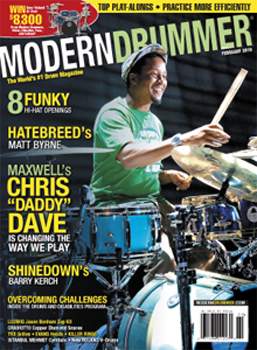



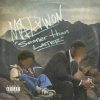


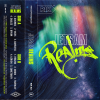


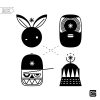
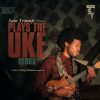





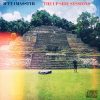
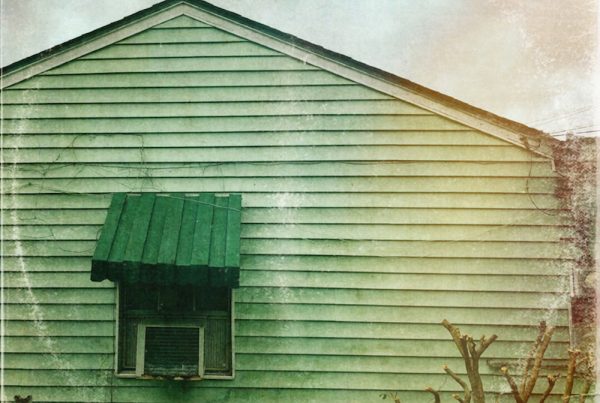

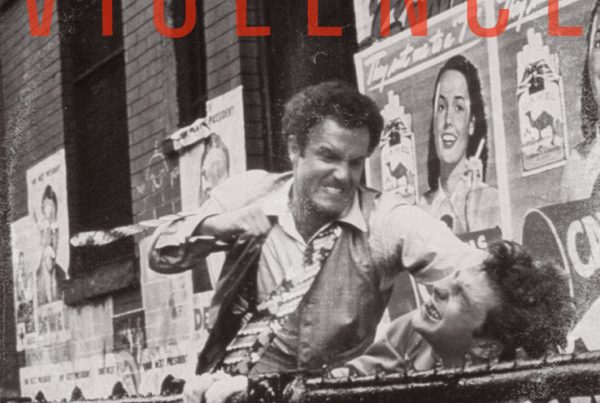

Hey “FTS!!!!!!”…do you have a “Real Name” or do you hide behind FTS!!!!!! like the Klan hides behind them damn sheets!!!!!!!
disculpen soy un musico del peru haciendo corriente de musica jazzista, toco bateria soy un musico profesional tengo videos de los mejores bateristas del mundo soy un estudioso de todo lo que avanza a mejorar pero este joven realmente me a dejado impresionado en su temprana edad tener la tecnica la musicalidad y la seguridad que tiene para dirigir una banda voy hacer todo posible para poder verlo huoston texas es un fenomemo del siglo 21 felicitaciones a este joven talento
Fuck this shit is probably a lame drummer rapper who got replaced by my guy bro handle yo biz so u dont have to be bitter you tenderloin lol cyberthug i smell shit so shut ya mouth
i’m all about words like raggly